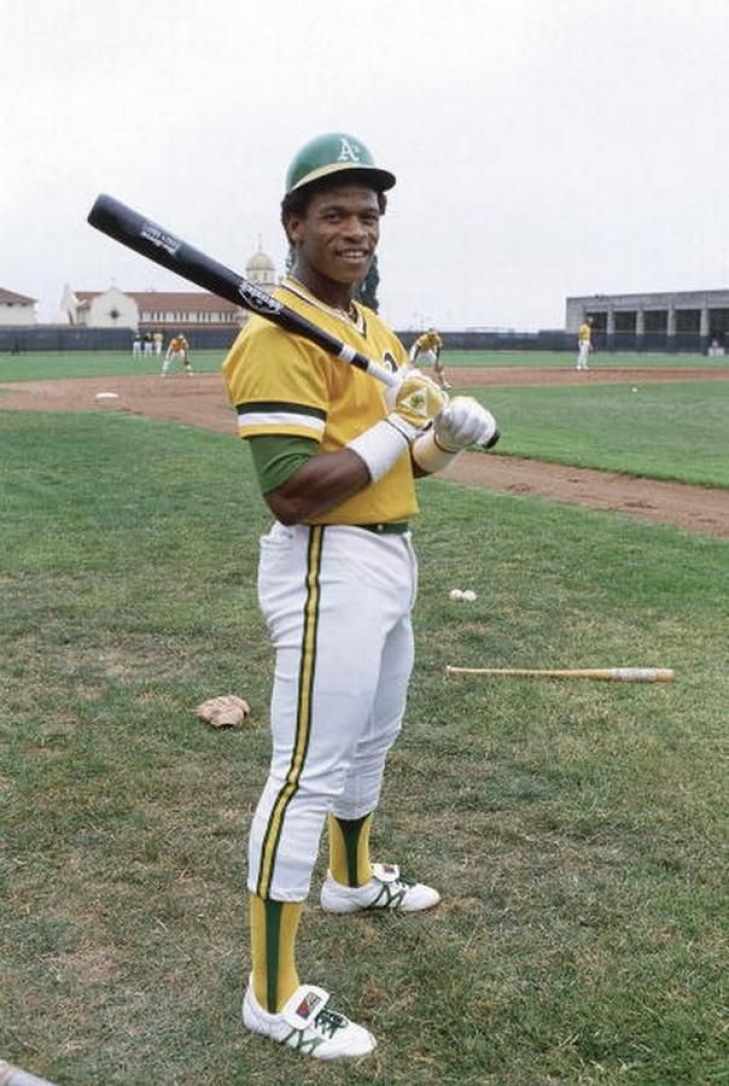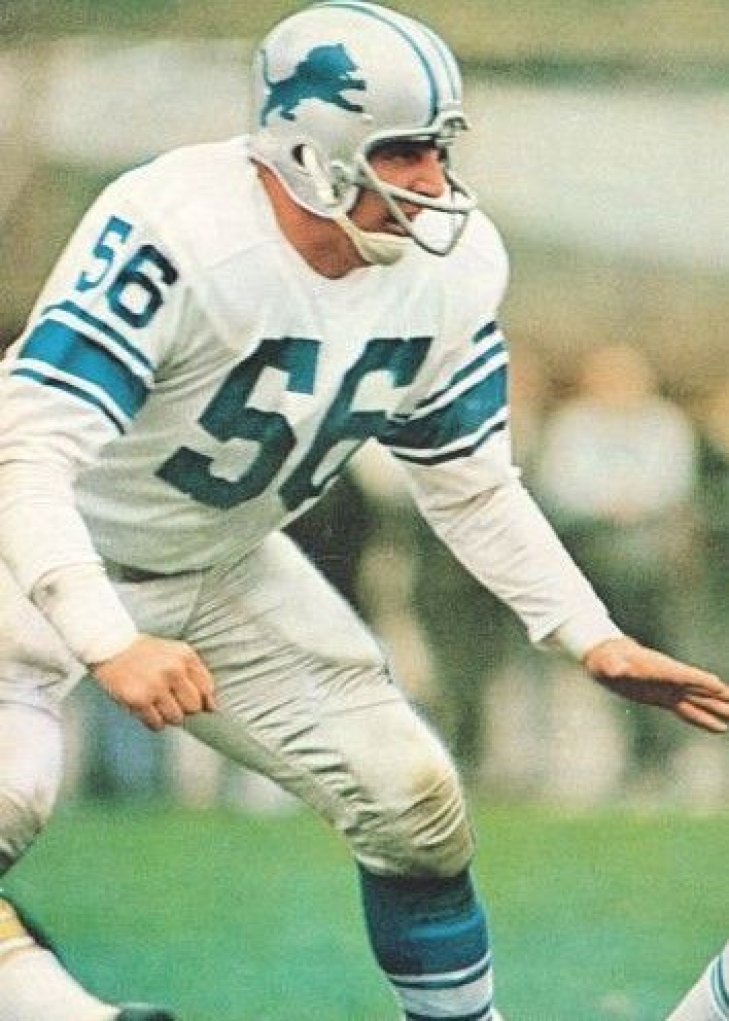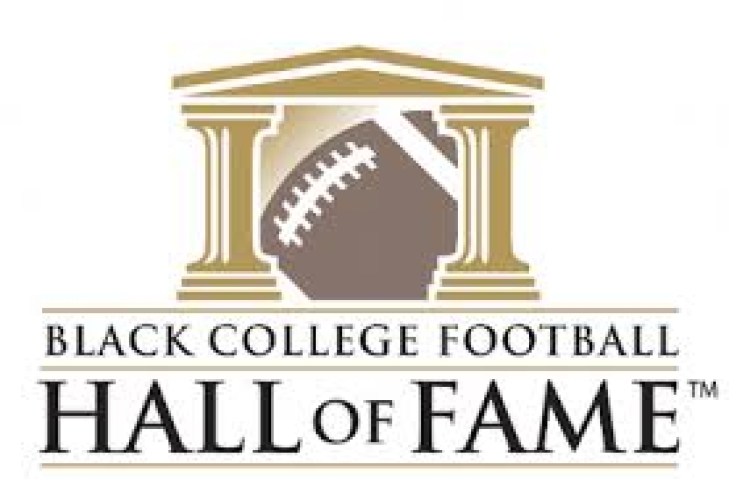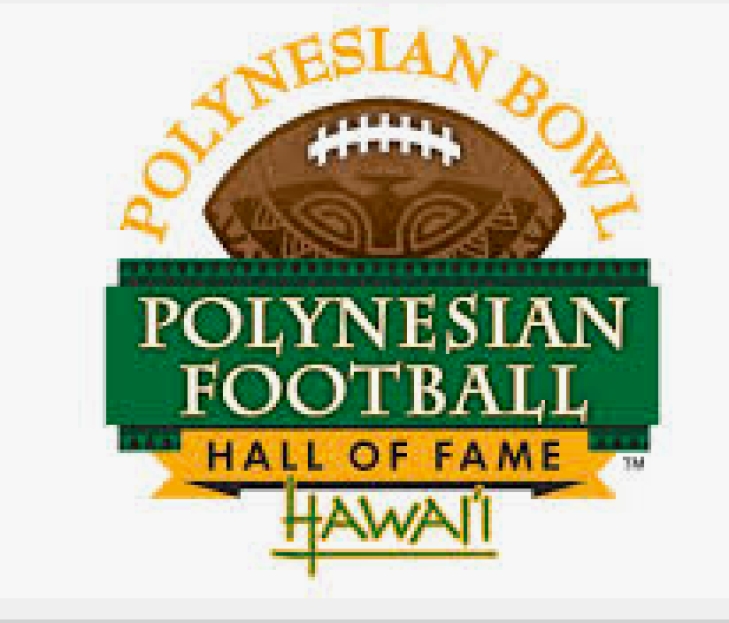
Committee Chairman
RIP: Rickey Henderson
We lost a legend today.
The greatest leadoff man in baseball history and the GOAT of the basepaths, Rickey Henderson, passed away. He was 65.
Henderson played for 25 years, defying age and mystifying logic with his enigmatic words. He was s force of nature on and off the field, referring to himself in the third person, and displaying a passion for baseball that had no peers.
From Oakland, Henderson played a large part of his career with the hometown Athletics, the team where he set the single-season record in Stolen Bases (130). He would shatter Lou Brock’s record, a seemingly unbreakable 1,406. Henderson also had an excellent power game, blasting 297 Home Runs, with a lifetime Slash Line of .279/.401/.419.
The “Man of Steal” won the 1990 American League MVP and was a two-time World Series champion (1988 Oakland and 1993 with Toronto). He also played for the New York Yankees, San Diego, Anaheim, New York Mets, Seattle, Boston, and the Los Angeles Dodgers. He entered the Baseball Hall of Fame in 2009 on his first year of eligibility.
We here at Notinhalloffame.com would like to extend our condolences to the fans, friends and family of Rickey Henderson
The Pro Football Hall of Fame Revisited Project: 1971 Preliminary VOTE
1971 PRELIMINARY RESULTS:
Thank you to all who participated in the Pro Football Hall of Fame Revisited Project. If you are still determining what that is, we acted like the PFHOF had its first class in January 1946.
We have completed the first 25 years thus far.
For “1971,” a Preliminary Vote with close to 100 players whose playing career ended by 1965. We are also following the structure in that players have 20 years of eligibility, and if they do not make it into the Hall, they are relegated to the Senior Pool.
Each voter was asked to select 25 names from the preliminary list, and the top 25 vote-getters were named Semi-Finalists.
A week later, the voters will be asked to pick 15 names from the 25 Semi-Finalists, and next after, they will pick five from the remaining 15. We will continue this process weekly until we catch up to the current year.
Please note that a significant change occurred “years ago,” allowing voters to submit less than the allotted spots.
32 Votes took place.
This is for the “Modern Era”
Bold indicates they advanced to the Semi-Finals:
*Indicates they have been removed from future ballots.
|
Player |
Year of Eligibility |
Vote Total |
|
Dick “Night Train” Lane DB-E |
1 |
32 |
|
Jim Brown RB |
1 |
31 |
|
Joe Schmidt LB |
1 |
31 |
|
Hugh McElhanney HB |
2 |
27 |
|
Mike McCormack T-G |
4 |
22 |
|
Marshall Goldberg FB |
18 |
21 |
|
Pat Harder E |
13 |
21 |
|
Rosey Brown T |
1 |
21 |
|
Billy Howton E-Fl |
3 |
20 |
|
Ward Cuff WB-QB-HB |
19 |
19 |
|
Alan Ameche FB |
6 |
19 |
|
Charlie Conerly QB |
5 |
19 |
|
Bill Osmanski FB |
19 |
18 |
|
Tank Younger FB-LB-HB |
8 |
18 |
|
Gene Lipscomb DT |
4 |
18 |
|
Bruno Banducci G |
12 |
16 |
|
Woody Strode E |
17 |
15 |
|
Bucko Kilroy G-MG-T-DT |
11 |
15 |
|
Billy Wilson E-FL |
6 |
15 |
|
Vic Sears T-DT |
13 |
14 |
|
Les Richter LB-C |
4 |
14 |
|
Jim Ray Smith G-T |
2 |
11 |
|
Harlon Hill E-DB |
4 |
10 |
|
Charley Brock C-HB |
19 |
9 |
|
Spec Sanders TB |
16 |
9 |
|
Frankie Albert QB |
14 |
9 |
|
George Wilson E |
20 |
8 |
|
Frank Cope T |
19 |
7 |
|
Les Bingaman DG-G-C |
12 |
7 |
|
Bob Gain DT-DE-MG-T |
2 |
6 |
|
Bobby Walston E-HB-K |
4 |
4 |
|
Buster Ramsey G |
15 |
3 |
|
Paul Lipscomb T-DT |
12 |
3 |
|
Leon Hart E-FB-DE |
9 |
3 |
|
Marion Campbell DE-DT-MG-G-T |
5 |
3 |
|
Walt Michaels LB |
3 |
3 |
|
Alex Webster HB-FB |
2 |
3 |
|
Frank Varrichione T |
1 |
3 |
|
*Parker Hall TB-HB |
20 |
2 |
|
*Bob Masterson E |
20 |
2 |
|
Jim Lee Howell E |
19 |
2 |
|
Baby Ray T |
18 |
2 |
|
Duane Putnam G |
4 |
2 |
|
Ray Wietcha C |
4 |
2 |
|
Ray Renfro HB-FL |
3 |
2 |
|
John Nisby G |
2 |
2 |
|
Jack Stroud G-T |
2 |
2 |
|
Bud McFadin DT-DG-LB-G |
1 |
2 |
|
Pug Manders HB-TB |
19 |
1 |
|
Chet Bulger T |
16 |
1 |
|
Paul Christman QB |
16 |
1 |
|
Ted Frisch FB |
16 |
1 |
|
Dick Huffman T |
16 |
1 |
|
Tommy Thompson QB |
16 |
1 |
|
Ray Bray G |
14 |
1 |
|
Bill Fischer T-G-DT |
13 |
1 |
|
Hugh Taylor QB |
12 |
1 |
|
George Ratterman QB |
10 |
1 |
|
Bob Boyd E-DE |
9 |
1 |
|
Chuck Drazenovich LB-FB |
7 |
1 |
|
Hardy Brown LB-DB-FB |
6 |
1 |
|
Art Spinney G-DE |
6 |
1 |
|
Tom Brookshier DB |
5 |
1 |
|
Kyle Rote E-HB |
5 |
1 |
|
Johnny Olszewski DB-HB |
4 |
1 |
|
Bill Forester LB-MG-DT |
3 |
1 |
|
Andy Nelson DB |
2 |
1 |
|
Jerry Norton DB-HB |
2 |
1 |
|
Jim Schrader C |
2 |
1 |
|
Tom Scott DE-LB |
2 |
1 |
|
Bob Toneff DT-DE-T-LB-G |
2 |
1 |
|
Tom Tracy HB-FB |
2 |
1 |
|
J.C. Caroline DB-HB |
1 |
1 |
|
Bill Groman WR-FL |
1 |
1 |
|
Dub Jones B-DB-WB-TB |
11 |
0 |
|
Abe Gibron G |
7 |
0 |
|
*Woodley Lewis DB-E |
6 |
0 |
|
Harley Sewell G |
3 |
0 |
|
*Don Burroughs DB |
2 |
0 |
|
*Lindon Crow DB |
2 |
0 |
|
*Marv Matiszak LB |
2 |
0 |
|
*Jesse Whittendon DB |
2 |
0 |
|
Tony Banfield CB |
1 |
0 |
|
Terry Barr HB-DB-FL |
1 |
0 |
|
Eldon Denenhauer T |
1 |
0 |
|
Dick Harris CB |
1 |
0 |
|
Ed Hussmann DT-G-DE-LB |
1 |
0 |
|
Bob Mischak G-TE |
1 |
0 |
|
Fred Williams DT-G |
1 |
0 |
This is for the “Senior Era”
Bold indicates they advanced to the Semi-Finals:
*Indicates that they will be removed from the ballot permanently.
|
Player |
Year |
Votes |
|
Buckets Goldenberg |
1 |
19 |
|
Whizzer White |
5 |
18 |
|
Ace Gutkowski |
7 |
14 |
|
Al Nesser |
14 |
11 |
|
Joe Kopcha |
10 |
10 |
|
Glenn Presnell |
10 |
8 |
|
Joey Sterneman |
16 |
7 |
|
Wildcat Wilson |
17 |
6 |
|
George Svendesen |
5 |
6 |
|
Gus Sonnenberg |
16 |
5 |
|
Gaynell Tinsley |
6 |
5 |
|
Jack Manders |
6 |
4 |
|
Father Lumpkin |
9 |
3 |
|
Pete Tinsley |
1 |
0 |
Please note that three voted for “None of the Above.”
This is for the “Coaches/Contributors”
Bold indicates they advanced to the Semi-Finals:
*Indicates that they will be removed from the ballot permanently.
|
Name |
Year |
Votes |
|
COMM: Bert Bell |
2 |
30 |
|
COACH: Clark Shaughnessy |
2 |
23 |
|
COACH: Buddy Parker |
2 |
22 |
|
COACH: Greasy Neale |
2 |
14 |
|
OWNER: Tim Mara |
2 |
13 |
|
OWNER: Charles Bidwill |
2 |
11 |
|
OWNER: George Preston Marshall |
2 |
6 |
|
OWNER: Dan Reeves |
2 |
5 |
|
EXEC: Arch Ward |
2 |
5 |
|
COACH: Jim Lee Howell |
2 |
3 |
|
OWNER Violet Bidwill |
2 |
2 |
|
GM: Ray Walsh |
2 |
2 |
|
EXEC: Lee Joannes |
2 |
1 |
|
COACH: Buck Shaw |
2 |
1 |
|
OWNER: Alexis Thompson |
2 |
1 |
|
OWNER: Edwin J. Anderson |
2 |
0 |
|
OWNER: James P. Clark |
2 |
0 |
|
GM: Don Kellett |
2 |
0 |
|
COMM: Elmer Layden |
2 |
0 |
|
OWNER: Arthur McBride |
2 |
0 |
|
GM/CONT: Dick McCann |
2 |
0 |
|
OWNER: Tony Morabito |
2 |
0 |
|
GM/EXEC: Arch Wolfe |
2 |
0 |
Next week, we will announce the Semi-Finalists for the 1971 Pro Football Hall of Fame Revisited Project.
The Black College Football Hall of Fame names its 2025 Class
The Black College Football Hall of Fame has announced that six names will comprise the Class of 2025.
The group marks the 16th Class, and will see Henry Dyer (Grambling State), Coach Fred “Pop” Long (Wiley College), Rashean Mathis (Bethune-Cookman), Jacquay Nunnally (Florida A&M), Dominique Rodgers-Cromartie (Tennessee State) and Jay “Sky” Walker (Howard) inducted.
The class will be honored in Atlanta on June 7, 2025.
Henry Dyer (Grambling State). Dyer was a three-time All-SWAC player (1963-65) and the school’s first 1,000-Yard rusher.
Reshean Mathis (Bethune-Cookman). Mathis was a First Team All-MEAC Selection (2000, 2001 & 2002) and was the 2002 MEAC Defensive Player of the Year. He holds the FCS record for Interceptions (31), Interceptions in a season (14), Interception Return Yards (682), and Interception Return Yards in a season (455).
Jacquay Nunnally (Florida A&M). Nunnally was the Black College Football Player of the Year in 1998 and 2000, was a four-time All-MEAC Selection, and a three-time Division I All-American. The quarterback threw for 4,239 Yards and 38 Touchdowns.
Dominique Rodgers-Cromartie (Tennessee State). The star Cornerback was a three-time All-OVC Selection and was an FCS All-American in 2007.
Jay “Sky” Walker (Howard). Walker took Howard to a MEAC and Black College National Championship and was the 1993 MEAC Offensive Player of the Year. The QB passes for 3,324 Yards.
Fred “Pop” Long (Wiley College). Long led Wiley to ten SWAC Titles and three Black College Football National Championships.
We here at Notinhalloffame.com would like to congratulate the impending Black College Hall of Fame members.
The Polynesian Football Hall of Fame names its 2025 Class
The Polynesian Football Hall of Fame has announced that Chris Kemoeatu, Jim Nicholson, and Kalani Sitake will comprise the Class of 2025.
The class will be honored from January 17 to 19 on a weekend including the Polynesian Bowl.
Of Tongan ancestry, Kemoeatu was an All-American at Utah in 2004 and was drafted in the sixth round by the Pittsburgh Steelers. The Guard played seven NFL seasons (all with Pittsburgh), where he played 75 Games and won two Super Bowls (XL & XLIII).
Nicholson, who has Samoan ancestry, played his college ball at Michigan State. He was drafted in 1973 by the Kansas City Chiefs, where he played from 1974 to 1979, and the Tackle would later play for San Francisco (1981).
Sitake played his college football at BYU, where the Fullback was part of their first Mountain West Championship team in 1999. He later went into coaching and took over the Head Coaching job at BYU in 2016, which he still holds today.
We here at Notinhalloffame.com would like to congratulate the impending Polynesian Football Hall of Fame members.





